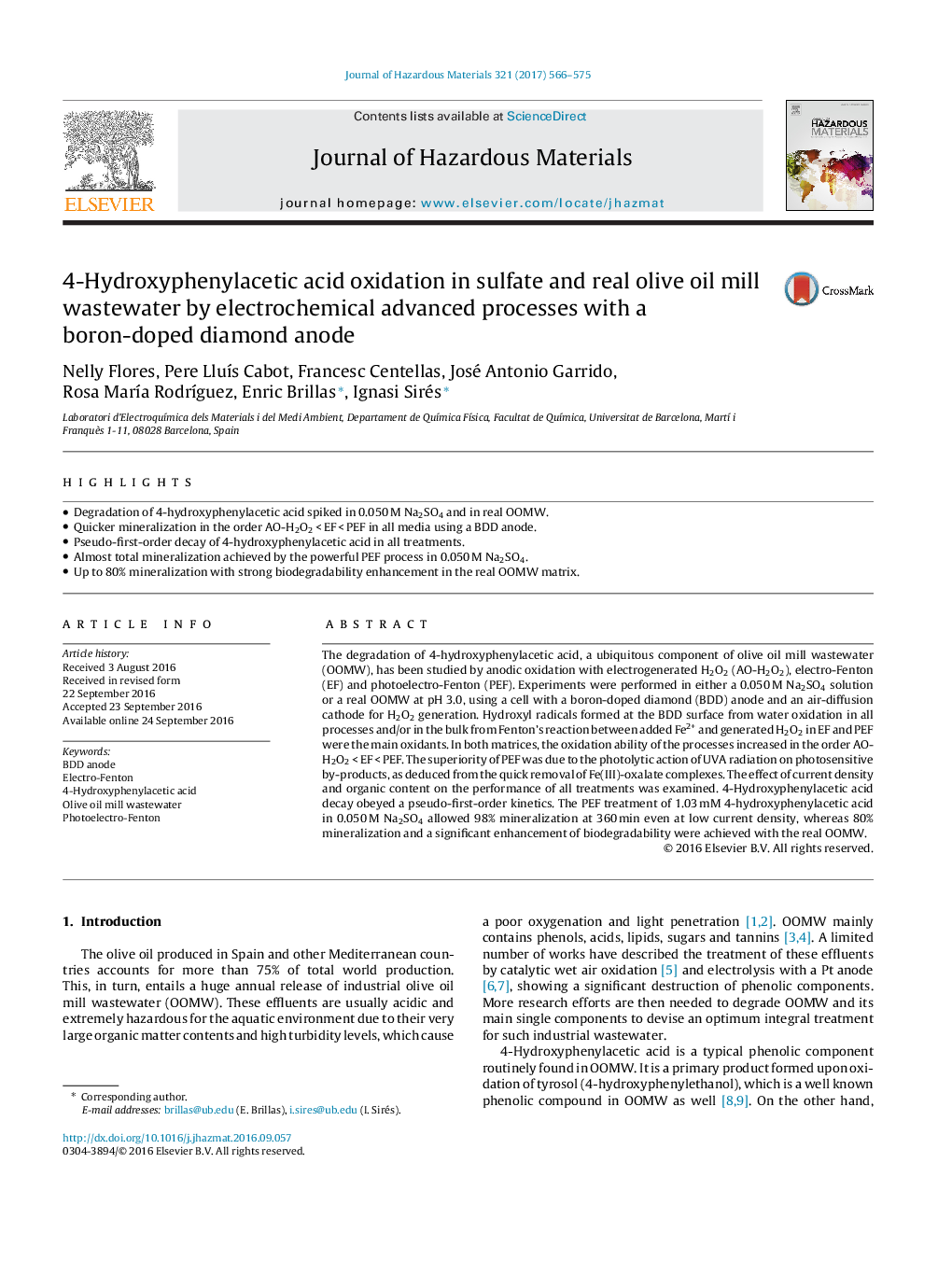| Article ID | Journal | Published Year | Pages | File Type |
|---|---|---|---|---|
| 4980082 | Journal of Hazardous Materials | 2017 | 10 Pages |
Abstract
The degradation of 4-hydroxyphenylacetic acid, a ubiquitous component of olive oil mill wastewater (OOMW), has been studied by anodic oxidation with electrogenerated H2O2 (AO-H2O2), electro-Fenton (EF) and photoelectro-Fenton (PEF). Experiments were performed in either a 0.050Â M Na2SO4 solution or a real OOMW at pH 3.0, using a cell with a boron-doped diamond (BDD) anode and an air-diffusion cathode for H2O2 generation. Hydroxyl radicals formed at the BDD surface from water oxidation in all processes and/or in the bulk from Fenton's reaction between added Fe2+ and generated H2O2 in EF and PEF were the main oxidants. In both matrices, the oxidation ability of the processes increased in the order AO-H2O2Â <Â EFÂ <Â PEF. The superiority of PEF was due to the photolytic action of UVA radiation on photosensitive by-products, as deduced from the quick removal of Fe(III)-oxalate complexes. The effect of current density and organic content on the performance of all treatments was examined. 4-Hydroxyphenylacetic acid decay obeyed a pseudo-first-order kinetics. The PEF treatment of 1.03Â mM 4-hydroxyphenylacetic acid in 0.050Â M Na2SO4 allowed 98% mineralization at 360Â min even at low current density, whereas 80% mineralization and a significant enhancement of biodegradability were achieved with the real OOMW.
Keywords
Related Topics
Physical Sciences and Engineering
Chemical Engineering
Chemical Health and Safety
Authors
Nelly Flores, Pere LluÃs Cabot, Francesc Centellas, José Antonio Garrido, Rosa MarÃa RodrÃguez, Enric Brillas, Ignasi Sirés,
